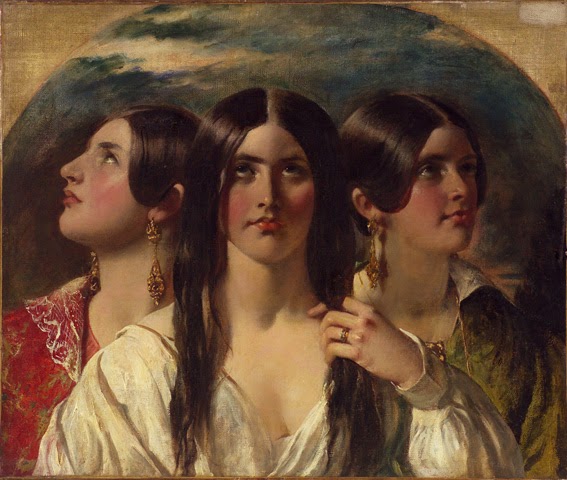

This seems surprising to me as when one, for comparison purposes, considers those exhibited at the RA between 18, Etty exhibited 138 against Frost 1836 to 1878 of 77 (Graves).

Turning to William Frost, an admirer of Etty, I am also concerned that there appear to be so few oils attributed to him in known collections. I say this as it is surprisingly most detailed suggesting a toe curled under the sole, possibly the result of fashionable shoes! Normally I have felt that the feet are usually rather weakly executed in Etty's single female works. At this point in time I too would tend to believe the work to be by Etty, however I have a problem with the model's foot. Richard Green's comments are indeed most helpful and introduce clarity to this debate. Mentally blocking out the background makes it easier to accept that the actual figure of the nude woman might be by Etty. I suggest that the present work (on canvas) could have been amongst such pictures. Many were bought by dealers who then commissioned artists to make these generally unfinished works more complete and saleable by adding backgrounds, as well as draperies and other details.

Most were executed on millboard, his favoured support for such works but some were on canvas. There were some 800 of Etty’s painted life-room studies in his posthumous studio sale of 1850. Etty certainly enhanced some of his painted life-room studies in this way, but his own invented backgrounds are usually much more broadly painted and do not close off the distance so abruptly as the niche-like curving stonework does here. This is clearly a life-room study to which an imaginary background has been added to create a more complete, saleable picture. Richard Green, Yorkshire, The Humber and North East England: Artists and Subjects, 17:22


 0 kommentar(er)
0 kommentar(er)
